Jade River: A History of the Mahurangi
Ronald H LockerFirst published 2001. Published online 2014–. This online edition is a work in progress…
Pages 139–144in printed edition
Thomas Scott lands in the Mahurangi
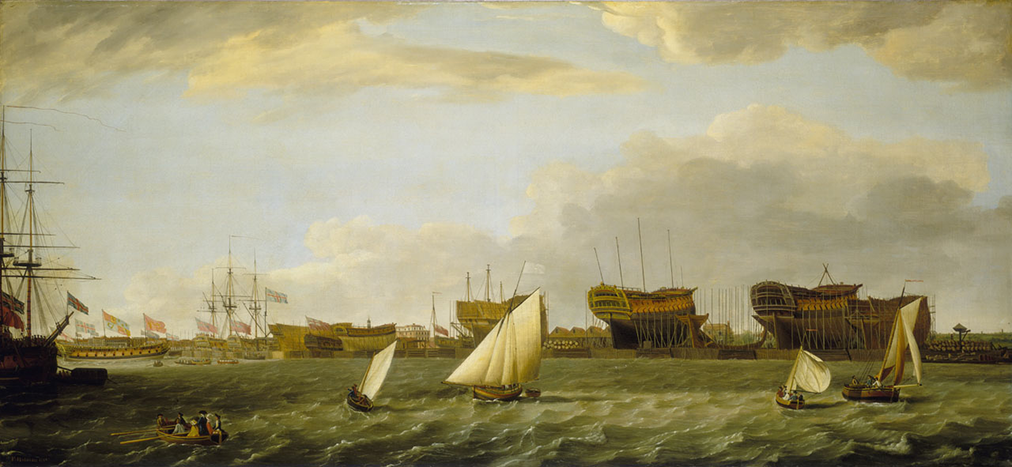
Within a Couple of Decades and Miles of Namesake’s Birthplace: Three miles downstream from Deptford Dockyard, past the Isle of Dogs also on the opposite bank, Blackwall Yard, at the time of Thomas Scott’s birth, was building the 1729-ton third-rater hms Albion—the largest and possibly the most formidable man-of-war built by the yard. That Thomas Scott and sons’ largest vessel, the cutter America, was registered as 40 tons contrasts boatbuilding in the Mahurangi in the 1800s with shipbuilding on the River Thames. Only John Darrach and sons, the most prolific Mahurangi yard, launched a greater tonnage, over its 15 years of building—1797 tons, 21 vessels that included 6 brigantines—than that single, largest Blackwall ship. Immediately beyond the Mahurangi, in a refreshing example of an indigenous placename prevailing over a colonially bestowed one, hms Coromandel’s proffered River Thames yielded to Hauraki Gulf. marine artist Francis Holman, 1784
Thomas Scott, builder of the William, the third vessel of 1849, was no transient. His efforts marked the beginning of a Mahurangi Harbour industry. Thomas Stuart Scott was born around 1800 at Blackwall, and grew up among the sights and sounds of shipbuilding. It seems likely that he was the Thomas Scott baptised by James and Anne at St George in the East, Stepney, in 1803. On this reach of the Thames were the great naval dockyards of Deptford and Woolwich, as well as many private yards, the largest being the Blackwall, operational from 1617as published 2001: “dating to 1638.” Work began building the yard in 1614. It specialised in East Indiamen, the largest ships of their time, up to 1460 tons, and, to replace themas published: 1300 tons, and, to protect them…, the famous Blackwall frigates, the fastest of their day. It seems Thomas did not learn his trade on his home ground, since the Worshipful Company of Shipwrights has no record of his apprenticeship. The family tradition is that as a young man he went to Nova Scotia, where he began building ships.
My uncle Albert Jamieson, great-grandson of Thomas and grandson of George Scott, told me and his grandson, David Peace, a story of Thomas as a whaler. It is dubious in many respects and wrong in others, but appears to have too much detail to be entirely a fairy tale:
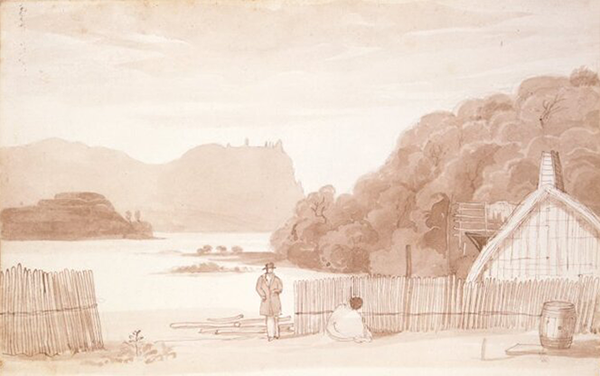
Wending Way via Whangārei: The shipwright who would provide the name for the eponymous Mahurangi landing and its peninsula, Thomas Scott, wended his way there via stints in Nova Scotia, Sydney, Tauranga, Sydney, the Bay of Islands, and here, ashore from Motukiore, Whangārei Harbour, Auckland, and, all-but finally, Mahurangi—he died after a short stint retired in Auckland. artist Edward Ashworth | Alexander Turnbull Library
He claimed that Thomas Scott came to New Zealand with a syndicate of three whaling ships from New Bedford in 1832. One was the Hannah. Peter Greenhill was purser. The expedition set up first at Coromandel, but when four men were killed, moved on to Nagel Cove, and finally to the Bay of Islands, where 2000 acres were purchased. The expedition was abandoned due to troubles with Hōne Heke and a falling price for whale oil. Scott went back to England, but returned to New Zealand. Three whaling logs, bound in leather and brass, survived in Scott’s possession, but were burned by his grandson, Jim Scott, because he or his wife were offended by the accounts of harsh discipline, such as keelhauling, contained therein.
The New England whaling records have produced no support whatever for this story. But there is an independent claim that Greenhill was an old whaler, and certainly his later fortunes were entwined with Scott’s. Allowing for the legend generation, so rife in family histories, there may be some substance to the tale. I believe it really refers to his involvement in Bay of Islands whaling during his period as a trader at there. At that time, syndicates were using the Bay of Islands as a base for whaling, either just offshore or ranging as far as the Kermadecs and Chathams, often with Māori crewmen. Entrepreneur that he was, it is quite likely that he became involved in such a syndicate, either before or after his time at Whangārei. He may have been a subscriber to the Kororāreka Land Company of 1839, New Zealand’s first company, which bought up large areas around the Bay of Islands. In the late 1840s there was indeed a collapse in the price of whale oil, and considerable fluctuations thereafter. There was a schooner Hannah, built in New South Wales, but bought by Wellington merchants and working the New Zealand coast. It arrived in Sydney in 1840 carrying a cargo of pork, maize and whale oil.
How did Thomas arrive in these parts from his shipbuilding apprenticeship in Nova Scotia? A young shipwright working there with numb fingers may well have felt the same yearning for the milder climate of the South Seas, that the Waipu folk did. A berth as ship’s carpenter on a New Bedford whaler would have been a good way to get to Sydney, where one could be inconspicuous among the host of others jumping ship.
Scott next surfaces, and with some certainty, as a harakekeas published 2001: flax. Harakeke, Phormium tenax, New Zealand flax trader at Tauranga. I believe he came with John Israel Montefiore, cousin of Joseph Montefiore, a notable merchant of Sydney. John left Sydney in October 1831 for Tauranga, seeking such trade commodities as harakeke, pork, and potatoes. From Tauranga he penetrated inland to Rotorua. He later settled as trader in the Bay of Islands. A connection with Scott seems evident from the following accounts.
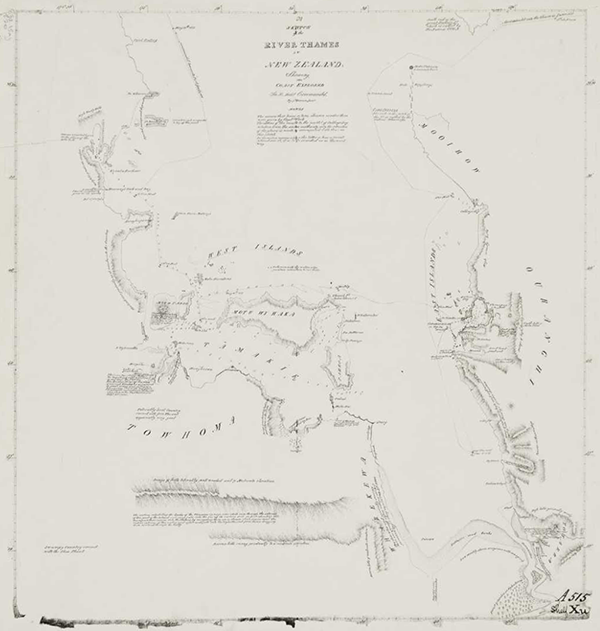
When Hauraki Risked Relegation: When Commander James Downie whacked the name Thames River on his “sketch” of what was already known as Hauraki, it would have been all the same if he and his convict ship hms Coromandel had been immortalised in a glorious gulf, as well as a firth, two towns, and a peninsula. chart James Downie
Henry Williams was at Tauranga in March 1833, trying to mediate in the bloody skirmishes between marauding Ngāpuhi, the local people, and Te Arawa. He refers to “a Mr Scott who resides there as a flax agent” He makes two visits to Scott at Maungatapu “to discuss the affairs of the natives”, which must have been causing the trader as much unease as the missionary. Williams observes with disapproval Māori dressing harakeke, pressing it into bales and loading out to a brig on the sabbath. Brett takes up the tale, about this time, as an example of the:
…almost incredible difficulties and dangers run by the early flax collectors — for instance: a Mr Scott, junior partner in a respectable firm in Sydney engaged in this trade, established a settlement at Tauranga — and a branch station on the island in the Rotorua lake.
He was following Tapsell’s example in setting up an outstation on Mokoia. Scott was asked by the local chief to move his post from there to another site more convenient for delivery of the harakeke. Scott agreed and went to help his agent, an Englishman known as “Cabbage”, move the trade goods. The natives were unhappy at seeing these go, and a scuffle ensued as a canoe was being loaded. “Cabbage” was thrown into the water and butchered, literally.
A powerful native attempted to drag Mr Scott into the canoe and would have succeeded if that gentleman had not hastily drawn a dirk to defend himself. This was wrested away, and the native would have overpowered him had not Mr Scott fortunately drawn forth a pistol and presented it. The man then hastened away.
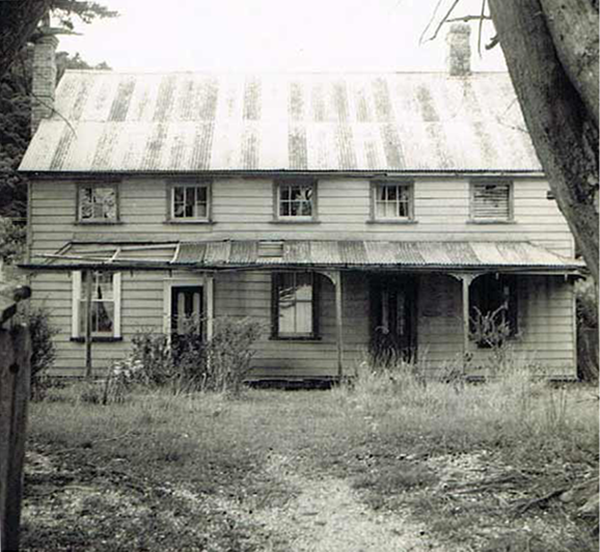
Almost History: The second Scott Homestead, built by Thomas Scott junior in 1877, almost didn’t survive much more than its first century, as one of the Mahurangi Harbour’s most iconic buildings. Mahurangi Action’s founding chairman, John Male, then a one-term Rodney County councillor, beseeched every authority he could before Civic Trust Auckland, led by Margaret Newman and Jo Donovan in the 1970s, lead an army of volunteers to save the building from possible demolition, in the period prior to heritage protection becoming the default response. image Scotts Landing
Scott and an English companion—Tapsell’s man?—were saved by the intervention of a dozen young chiefs, who encircled the hut they had retreated to, and fended off 300 angry natives, trying to burn them out. After twenty minutes peace was restored. “Cabbage” had already been divided up for the ovens, and Scott recovered only an arm and entrails, which he burned with his hut. The chief was apologetic. The repentant tribesmen had to return the stolen goods, and carried them to the new station. Prudently Scott soon withdrew from there. This incident seems to have occurred in 1833, after Williams’ visit. It appears that by 1834 Scott was back in Sydney at his old, and safer, trade. Nowhere in the above accounts is Scott given a first name or initial. Yet it seems certain that they refer to our Thomas Scott. In the Auckland Gazette in 1841, two land claims are listed consecutivelycases 348, 349 for hearing, both involving Thomas Scott of the Bay of Islands. The first claim, at Whangārei, is certainly by our shipwright; the second can hardly be by any other. It claims six acres on Tauranga Harbour:
alleged to have been obtained from the native chief Napa Nuku, residing at Maunga Tapu, Tauranga as a gift.
[purchase undated and claim disallowed]
Maungatapu was the site of Scott’s harakeke station, according to Williams, and a strategic spot for a trader. It lies at the tip of the peninsula where the old bridge crosses to Mount Maunganui. Thomas Scott, as we shall see, had more adventures as a trader in the Bay of Islands.
At St James in Sydney, Thomas Stuart Scott married Ann Louise Russell in 1834. He was described in the register as shipwright of Sydney. In 1835 the couple baptised a son, Thomas Flower Scott, at St Philip’s, Sydney. Thomas then decided to try his luck in New Zealand again. On 5 September 1835, the family sailed for the Bay of Islands in the Nimrod, accompanied by Ann’s brother. Flower Russell, then a bachelor, was a caulker by trade (in 1840). He also had been baptised at St George, Stepney, in 1792 (of Alex and Elizabeth). Thomas and Flower may have been acquainted there. In 1836 the brothers-in-law purchased from Pomare II for £10, a plot below his pā at the mouth of the as published 2001: Kawakawa estuary (on the headland opposite Opua) Kawakawa Inlet. It was:
120-200 ft. square, more or less, from high water mark and known by two remarkable trees.
[claim 208, disallowed]
Other Nimrod passengers were shipwright James Hawkins, with his sister and mother. Scott and Hawkins teamed up, and on the newly acquired beachfront built the little schooner Trent, 18 tons. Russell would also have been involved and would have done the caulking. The Sydney Herald on 15 May 1837 reported the robbing of Greenway and two shipwrights at:
…the ground that Boo Murray had sold several years ago — industrious and hard-working men, one named Hawkins with an aged mother and sister to provide for.
The Trent was launched in 1837, its initial survey certificate survives:
This is to certify that Gilbert Mair has held a survey on the ship Trent, built at the Bay of Islands by James Hawkins and Thomas Scott in 1837, of which Thomas Bateman, trader, is the sole owner, the master and builders being British subjects. The vessel has one deck, is schooner rigged, square sterned, has a figurehead and no quarter galleries, and is of the burthen of 18 tons.
And whereas the Chiefs of New Zealand have adopted a National flag, but have as yet made no provision for the registration of vessels of the build of this country, until such other provisions be made, Trent is entitled to bear that flag and be respected accordingly.
Given under my hand and seal at the British Residency, James Busby [abridged]
Under Captain Wing, the ship went south with Hobson and helped to survey the Waitematā at the time of the purchase of the site of the capital.
The partnership of the two shipwrights ended on a most unhappy note. On 20 January 1839, Clendon wrote to Busby that Hawkins claimed Scott “had murdered his wife’s brother”. This remarkable accusation seems unfounded. Although Clendon interviewed both parties, there is no further reference to the incident in the Resident’s papers.
Flower Russell married a young Māori womanas published 2001: Maori girl, Waireka, who bore him a son in 1843, and a daughter in 1844. His family here fades from the record.
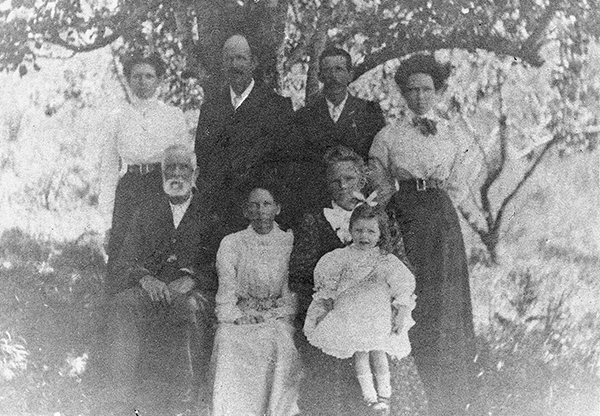
Shipwright to Benevolent Mahurangi West Farmer: While his brother, Thomas, went from shipwright to coastal skipper, George Scott became a farmer at Mahurangi West, and gifted two acres of a hundred-acre block as the site of the much needed Mahurangi Heads West School. Despite his generosity, and that of his brother who jointly owned the land, his bid to build the schoolhouse was unsuccessful, being £5 more than the lowest tender received. However, with half of his children making up almost a third of the school’s inaugural roll of 16, George Scott’s generosity wasn’t entirely selfless. Long since, the one-classroom school morphed into the much-adored Mahurangi West Hall. Pictured with his wife Susannah, also seated, right, and 6 of their 10 children. image Jade River: A History of the Mahurangi
In 1837, Scotts’ second son, George Stuart Scott, was born. A Mrs Scott arrived in Sydney from the Bay of Islands on 5 August 1839, and a Mr and Mrs Scott sailed on the reverse voyage on 24 November. There is no further record of Mrs Scott, but there is a family memory that she did not like New Zealand, and returned to Australia. George Scott, then seven, recalled the “sacking” of Kororāreka in 1845, and that afterwards Māori tried to sell his father’s dog, which he had to buy back for half a sovereign. Perhaps it was this traumatic occasion that proved the last straw for Mrs Scott.
By the time of the Treaty of Waitangi, Scott was a trader at the Bay of Islands, in partnership with James Anderson, painter and glazier. The New Zealand Advertiser and Bay of Islands Gazette on 13 August 1840, advised that the partners offered from the storeship Tuscan, ex Hobart and lying off Russell, a range of desirables:
…stout, ales, Jamaica rum by the barrel, figs of tobacco, large-bowl pipes, imported foodstuffs and New Zealand cured pork, double-barrelled guns, ladies and gents racing saddles, tents, etc.
In his land claim at Whangārei, Scott described himself, 12 November 1840, as trader, shipwright and boatbuilder.
In May 1839, Scott, Anderson and Russell had bought 3000 acres at Parua Bay, Whangārei, from Māori for £71. (Claim 348, 900 acres allowed). Here they “formed an establishment at considerable expense”, no doubt a trading post. There he built the schooner Governor Fitzroy, 40 ton, 43 feet. It was launched in 1844, and registered on 15 July as owned in equal shares by himself, William Green, trader, and Thomas Black, dealer, both of Russell. The artist, Edward Ashworth, did a sepia and ink drawing of “a shipbuilders’ yard on an inlet of Whangarei Harbour” in January 1844. With Motukiore in the foreground and Manaia Heads behind, it can only be of Scott’s post at Parua Bay. The stem of the shipas published 2001: stem of the ship (not yet planked) and scaffolding protrude from behind a raupō-thatched cottage. A man in a large hat and greatcoat, probably Scott, faces the artist; a Māori in a cloak squats beside a paling fence. It is not a scene of intense activity.
Scott was having problems with his land claims, complaining in a letter of September 1843 to the Land Commissioner that he missed out on court hearings because of lack of notice of sittings, due to poor communications with Whangārei, and in spite of his determined efforts and expense in assembling witnesses. He was always in the wrong place and at the wrong time. It seems that he made a trading voyage to Tahiti when the ship was launched. In another such letter on 10 June 1844, he says “my vessel now lies at Manukau and is about proceeding to Otaihite”. He gives his address as “c/o Jas. Anderson, O’Connell St”. (Anderson and Shaw were then glaziers in Auckland). A letter of 1857 confirms that he was in Tahiti at the time of the hearing in 1844. Scott and partners appear to have continued trading to the Pacific islands out of Russell, since he was at the “sacking” of Kororāreka on 11 March 1845. (Russell, the first capital, was then at Ōkiato, now the car ferry terminal opposite Opua. The name was transferred to Kororāreka when it was rebuilt a year or two later). The venture proved short-lived. The three were still owners when the ship was lost in November the following year. There is no other detail on the register. This fact, and the absence of any report in the newspapers of the time, suggest that the ship foundered in coral seas. It must have been a severe set-back to Thomas to have lost the result of his labour after a working life of only sixteen months. His adventurous trading days were over.
By 1848, Scott was back at his old trade of shipwright in Auckland. Shortly afterwards he made his last move. My uncle claimed he brought up his family and possessions in an open boat to Mahurangi. Thomas then set to work on a site beside the River, probably the one he was to buy. He launched his first ship there in 1849.
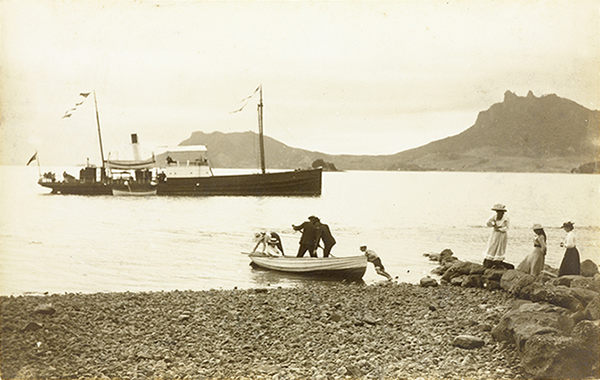
Shipwright to Steamboat Skipper: Thomas Scott’s sons sought futures other than the boatbuilding they learnt apprenticed to their father. Thomas Scott junior became a coastal skipper, including of the steamboat Coromandel, possibly when pictured here in Urquharts Bay, 1905. Only three further vessels were built at Scotts Landing following the retirement of Thomas Scott senior in 1863, culminating with the Gypsy, in 1875. image Whangārei Art Museum
In the same year, he apprenticed his son Thomas as shipwright. The indenture, dated 6 July 1849, has survived. It is valuable in establishing the origins of Thomas senior in Blackwall, as well as being an interesting example of a Victorian industrial agreement, somewhat weighted in the employer’s favour. It is written with traditional legal disregard for punctuation. For the long term of seven years, these conditions applied:
…the said apprentice his said master well and faithfully shall serve his secrets keep his lawful commands everywhere gladly do hurt to his master he shall not do nor willingly suffer to be done by others but the same to his power shall let or forthwith give notice thereof to his master the goods moneys or effects of his master he shall not embezzle or waste nor lend them without his consent to any from the service of his master he shall not at any time depart or absent himself without his master’s leave but in all things as a good and faithful apprentice shall demean and behave himself towards his master and all his during the said term.
In return the said master undertook to:
… apprentice the trade of shipwright with all things belonging thereto shall teach — and during the term shall allow unto his apprentice fit and sufficient meat drink washing lodging clothing and all other necessaries.
Being family, there were no wages, but that was normal for children of the Mahurangi for the next ninety years. James Clare’s indenture to Scott also survived, and was once offered to my uncle. Clare did better at a shilling a week.
It appears that Russell and Greenhill may have assisted Scott in his first shipbuilding on the Mahurangi. They were part owners of his first Mahurangi cutter, the William. Russell appears as its skipper in the Mahurangi trade in 1852.
At the first sale of Mahurangi Village lots in September 1852, Thomas sen. acquired the plum site, taking in the whole of Scotts’ bay, now regional park (Lots 42–5, 49–50; eight acres). He could hardly have done better for scenery or strategic siting. His north headland was to become the wharf site. In the bay he built his homestead. His slipways are said to have been upstream of the old wharf site; indeed there is a convenient sandstone shelf just upstream of the present hauling-out poles. Another 12 schooners and cutters were launched there in the next 23 years. Thomas also became an innkeeper. He retired in 1863, presumably after the building of Volunteer, and moved to Auckland, where he died in 1864. The business continued briefly under his two sons. The America, 1865, is the only one of the vessels listed in the appendix to be registered as built by Scott Bros. As Thomas was by then a skipper, it seems more likely that George (aided by the Shorts) was the builder. I believe the yard then passed to the Short brothers. The last Scott vessel, Gipsy, 1875, is registered to Thomas, but again seems more likely to have been built by George and Thomas Short. It was a last effort from the yard after the drowning of Ben Short. It was in the same year that the Darrochs built their last vessel at Mahurangi; the Darrachs lasted five years more.
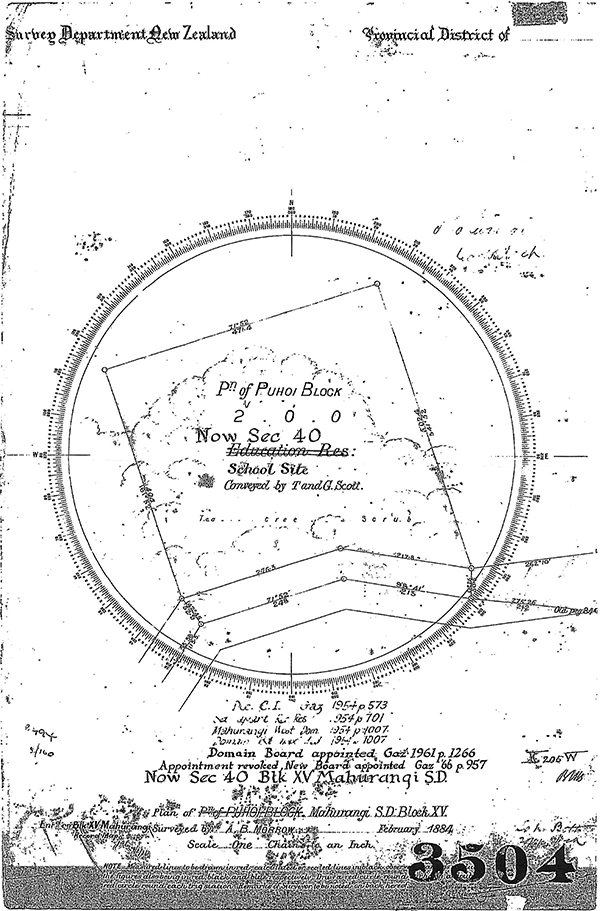
g and t Scott Mahurangi West Legacy: In addition to his Ōpaheke property, then called Scotts Point, George, with his elder brother Thomas, owned 100 acres that subsequently straddled the Mahurangi West Road, when it was dedicated. The brothers gifted two of those acres for the school that, after 1946, became the Mahurangi West Hall. The other Scotts gift to Mahurangi West was the example of the Scott Homestead, which, by the beginning of the third millennium, had become a popular marquee wedding venue. This inspired the creation of a marquee site below the restored Mahurangi West Hall, both for community use, and, pivotally, as a revenue generator—the one-classroom schoolhouse was far too small, on its own, to earn appreciable hall hireage income. plan Mahurangi West Hall
Thomas Scott junior went from shipwright to coastal skipper. In 1864 he appears on a list of those excused duty in the militia on payment of £10. In that year he was engaged in the Mahurangi trade as master of the cutter William and Julia, owned by the local chief, Wharerangi. Scott was her owner, 1867–8. Thomas junior made the sea his subsequent career.
In 1861 Thomas Flower Scott had married Janet Dorran, who was only just a New Zealander, having made a comfortable journey on the Jane Gifford, in the womb. Her father, John, became an engineer at the copper mine on Kawau. Thomas and Janet had twelve children. Electoral rolls show that both Scott brothers maintained homes on the site at least until 1875, when their last cutter, the 27-ton Gypsy, was built.
George Scott in 1861 married Susannah Bennett, daughter of a widow, Margaret, then living with three children in Dairy Bay. Her father, John Benjamin Bennett, had been a sailor, formerly of Kororāreka, Wellington and Auckland. George and Susannah Scott had 10 children. In 1876, George purchased Ōpaheke Bay, directly across the harbour, from Te Hemara. There he built a homestead. It was demolished in the 1920s by son James. Our own cottage stands on part of this land, adjoining my great-grandfather’s in Jamieson Bay. Susannah Scott and Mary Jamieson, my great-grandmother, were great friends and “used to confine each other”. My grandfather, Thomas Jamieson, married Margaret Anne Scott, but she died after bearing three children, and I got a different “granny”. George Scott died in 1917, and his wife in 1915.
A list of Scott, and other, vessels follows this section. Some general comment on all the lists is timely here. Davey Darroch’s booklet, Shipbuilders of Rodney County, 1934, has been the basis of previous accounts of shipbuilding on the Mahurangi. Written with first-hand knowledge, it is valuable, but subject to the errors of recollections recorded in old age. Darroch admitted its limitations, especially for the Scotts. All the ships in the lists that follow in the appendix have been checked against the Register of New Zealand Ships 1840–1952. New Zealand Shipwrecks is a valuable additional source, since many Mahurangi ships appear in its pages. Davey was sometimes wrong, but not often. The registers themselves are imperfect. Sometimes the builder is not given; sometimes the owner is recorded as builder. Since there is a builders’ index, the lists here are likely to be complete for known builders, but there may be other vessels by minor builders, embedded in the bulky register. The list that follows this sectionas published 2001: The lists in the appendix are about the best that can now be done. is about the best that can now be done.
